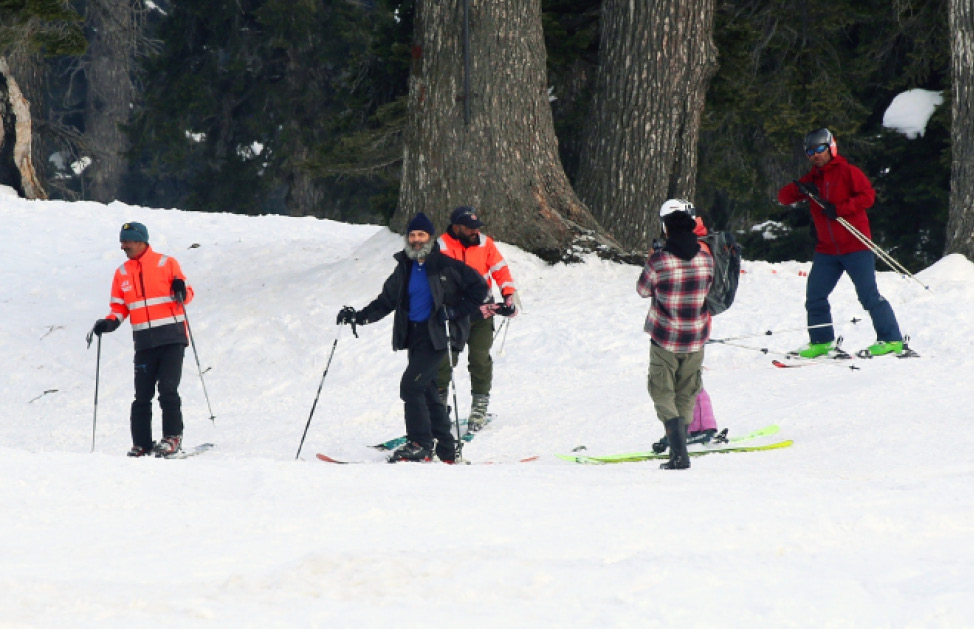Tasks set by Udaipur Chintan Shivir not yet on anvil; no clarity if CWC polls will be held.
Rahul Gandhi’s post Bharat Jodo Yatra skiing holiday in Gulmarg was pertinent: it showcased his skill in controlling and enjoying a downhill slide. The skiing holiday followed his spirited attack in and outside Parliament on the Modi government, which is his right as the leading light of the nation’s principal opposition party. Rahul’s original plan for the past week, during which he berated Modi from his Lok Sabha constituency Wayanad, included a visit to Prayagraj in UP, where he was to participate in a function at the Kamala Nehru Memorial Hospital, an institution set up by Jawaharlal Nehru in 1936. He was to fly to Babat airport in Varanasi in a private aircraft (he normally does not use commercial flights) from Waynad on 14 February—on 13th evening the aircraft charter company informed Varanasi airport that the flight had been cancelled. Rahul flew to Srinagar in J&K instead. (UP Pradesh Congress leader, Ajai Rai, however alleged that Rahul had been “denied permission to land in Varanasi”. The airport denied, citing the communication from the air charter company.)
While in Gulmarg Rahul tweeted: “Looking forward to visiting my alma mater Cambridge University and delivering a lecture at @CambridgeJBS. Happy to engage with some of the brightest minds in various domains, including geopolitics, international relations, big data and democracy.”
His hosts, Cambridge Judge Business School, tweeted back, saying it was delighted to welcome back Gandhi to the Cambridge University later this month. “He will lecture on @CambridgeMBA and hold closed-door sessions on Big Data and Democracy and India-China relations, with @shrutikapila, supported by the Bennett Institute for Public Policy, the Centre for Geopolitics at the University of Cambridge and the History Faculty, University of Cambridge,” it said.
Another round of Modi-bashing thus is slated for this month end.
While Rahul’s strobelight has been on Gulmarg and Cambridge, the Grand Old Party is preparing for its 85th plenary at Raipur, the capital of Congress-ruled Chhattisgarh, where the election of Mallikarjun Kharge as Congress president is to be ratified. The session, scheduled from 24 February, will be a two-day affair (all previous plenary sessions were held over three days). This will be 31st Congress Plenary to be held post 1947. Of the 30 post-Independence Plenaries, 17 have been presided over by members of the Nehru-Gandhi clan—Jawaharlal Nehru (thrice), Indira Gandhi (twice), Rajiv Gandhi and Rahul Gandhi (once each) and Sonia Gandhi on ten occasions. The first post-Independence session at Jaipur in December 1948 was presided over by a non-Nehru, Pattabhi Sitaramayya—the latest one will be in league with that, with Mallikarjun Kharge at the helm.
Normally plenary is an occasion for 12 members, half of the strength of the 24-member CWC to be elected by the delegates. The Congress party’s Constitution is skewed in favour of the incumbent president—12 elected members are balanced by an equal number nominated by the party chief. Usually setting up of CWC is a staid affair, with the “High Command” having its way. In 1972 at Simla (as Shimla was then spelt
The CWC elections in recent years have been held twice—on both occasions non-Nehru Gandhi chiefs presided. P.V. Narasimha Rao was the head at Tirupati in April 1992; Sitaram Kesari presided in Calcutta (Kolkata) in August 1997. The contests in Tirupati and Calcutta saw exciting powerplay, but later the elected members resigned to make way for all 24 members to be nominated. Since the days of the Independence struggle GOP has had somewhat controlled inner-party democracy, in which “High Command” has held sway. (Netaji Subhas Chandra Bose quit as Congress President and left the party to launch Forward Bloc when he was overwhelmed by “High Command”.)
A debate is raging if Raipur should see CWC poll or not. As is usual, drafting committees for resolutions: political, economic, international, farming-agriculture, social welfare and youth-education-employment have been set up. Over and above these there is a panel headed by veteran Ambika Soni (the only leader in present times who was a CWC member in the 1970s) which includes legal eagle Abhishek Manu Sanghvi which is looking at amendments to the party constitution. Seats in CWC may be reserved for former Congress Presidents and former Prime Ministers—thus Sonia Gandhi, Rahul Gandhi and Dr Manmohan Singh will automatically occupy three of the 12 nominated seats. At present Congress President and leader of the party in Parliament are automatic members—Mallikarjun Kharge and Sonia Gandhi (as chairperson of CPP) are entitled. There is speculation if Priyanka Gandhi Vadra will contest for a seat or will she be in the nominated list in case elections are held. It is said that the Nehru-Gandhi troika prefers elections to be held and Priyanka is inclined to contest. However, the enthusiasm among other senior leaders (or those so perceived) is waning—the fear of the unknown, emergence of new faces makes them opt for status quo (read: nominations for all seats).
As the GOP heads for Raipur the tasks it assigned to itself ten months back at the Chintan Shivir in Udaipur are yet to be even put on anvil. The creation of two committees—for election management and public feedback—and the setting up of a training institute for party workers are yet to see even a ground-breaking ceremony. The bid for an ideological reboot and an improvement in its feedback mechanism has been talked about often since 2019.
The Udaipur jamboree produced hot air. Will Raipur do any better? It is not yet clear if Sonia Gandhi’s health will permit her presence at Raipur. Chief Minister Bhupesh Baghel is laying out a red carpet for the party in his state—will Raipur chart a way forward for the Indian National Congress?

